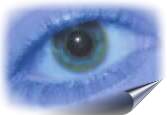 |
The Euro coins from Austria
Austrian euro coins have a unique design for each denomination, with a common theme for each of the three series of coins. The minor coins feature Austrian flowers, the middle coins examples of architecture from Austria's capital, Vienna, and the two major coins famous Austrians. All designs are by the hand of Josef Kaiser and also include the 12 stars of the EU and the year of imprint.
Die österreichische Euromünzen haben ein unterschiedliches Design für jede Münze, wobei es ein gemeinsames Leitmotiv für jede der drei Münzserien gibt. Die kleinen Münzen zeigen österreichische Blumen, symbolisch für die Umwelt. Die mittleren zeigen Beispiele der österreichischen Architektur, über die Epochen verteilt. Die beiden großen Münzen zeigen berühmte Persönlichkeiten. Alle Motive stammen aus der Hand von Josef Kaiser und zeigen die zwölf Sterne, das Prägejahr und die Flagge Österreichs.
 |
 |
 |
Motive 1 ct.: Gentians flower (Gentiana acaulis) Motive 2 ct.: Edelweiss (Leontopodium alpinum) Motive 5 ct.: Alps Primel With motives of protected plants Austria would like to remind the necessity for environmental protection, in addition they symbolize the Austrian Role in the European environmental policy.
Mit Motiven von geschützten Pflanzen möchte Österreich an die Notwendigkeit des Umweltschutzes erinnern, außerdem symbolisieren sie Österreichs Rolle in der europäischen Umweltpolitik.
|
 |
 |
 |
Motive 10 ct.: Stephansdom The south tower of the St.Stephen Cathedral (1147-1440) is considered as a landmark of Vienna. The clay tile roofing of the 137 m high 'Steffl' shows the Habsburg coat of arms.
Der Südturm des Stephansdoms (1147-1440) gilt als Wahrzeichen der Stadt Wien. Das Ziegeldach des 137 m hohen 'Steffl' zeigt das Habsburger Wappen.
|
Motive 20 ct.: Belvedere Palace The garden palace built for prince Eugen in the years 1714 to 1723, highly over Vienna, belongs to the most beautiful baroque buildings of its kind. The neutrality agreement, that was signed here on the 26th of October 1955, gave back the sovereignty to the Austrians.
Das für Prinz Eugen in den Jahren 1714 bis 1723 erbaute Gartenpalais hoch über Wien gehört zu den schönsten Barock-Gemäuern seiner Art. Das Neutralitätsabkommen, das hier am 26. Oktober 1955 unterzeichnet wurde, gab den Österreichern ihre Souveränität zurück.
|
Motive 50 ct.: Secessions Pavillion Important art nouveau building of the Artist Union Viennese Secession. Like the Euro today, it once the birth of the art nouveau symbolized the begin of a new era.
Bedeutendes Jugendstil-Bauwerk der Künstlervereinigung Wiener Secession. Wie der Euro heute, so symbolisierte einst auch die Geburt des Jugendstils den Anbruch einer neuen Ära.
|
 |
 |
Motive 1 €: Wolfgang Amadeus Mozart (1756-1791) The Portrait of the composer simbolize the Austrian fame as country of Music. Far over 100 works originate from the feather of the most famous Austrian artist.
Das Portrait des Komponisten soll Österreichs Ruf als Land der Musik unterstreichen. Weit über 100 Werke stammen aus der Feder des bekanntesten österreichischen Künstlers.
|
Motive 2 €: Bertha Freifrau von Suttner (1843-1914) The radical pacifistic authoress ('the weapons down'), wearing the Nobel Prize of Peace in Austria is a symbol for searching for peace.
Die radikal-pazifistische Schriftstellerin ('Die Waffen nieder') und Friedensnobelpreisträgerin ist in Österreich Symbolfigur für das Streben nach Frieden.
|
Embossing place
The Austrian coins are manufactured in the embossing place in Vienna.
... back
|
|
![]()


![]()

